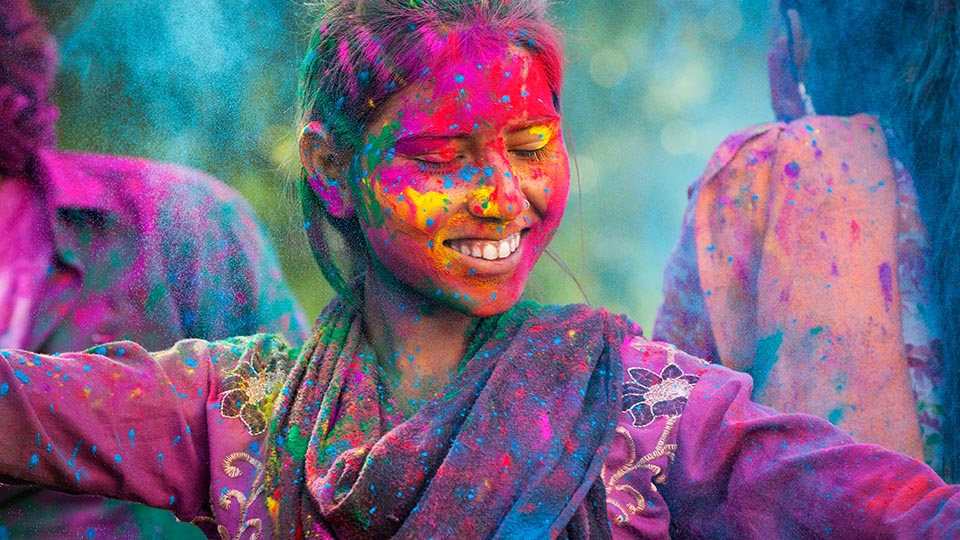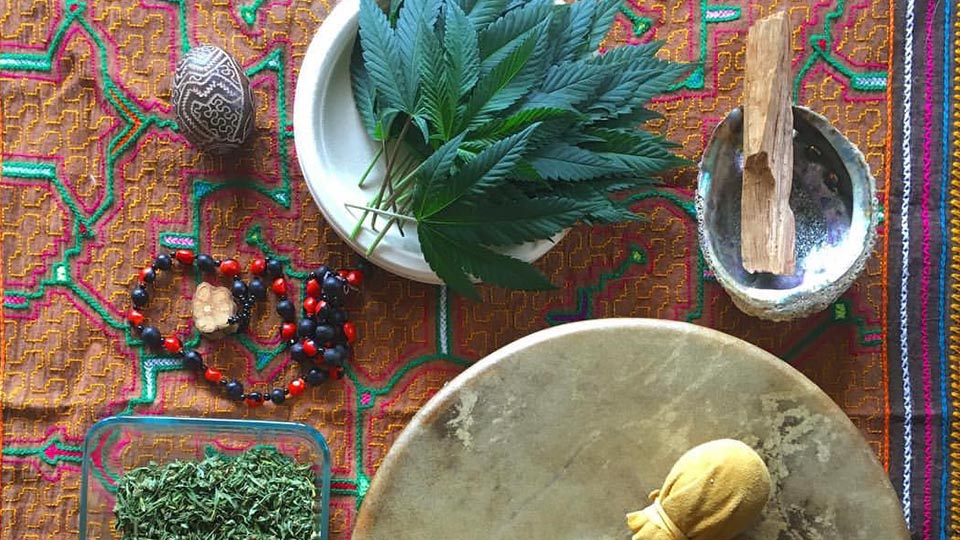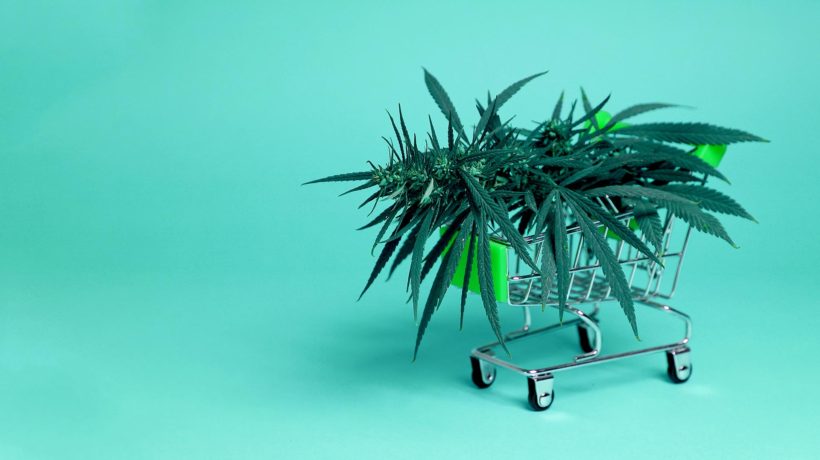If you’re a true Angeleno, you’ll know a downward facing dog from an upward facing dog. It’s also more likely than not that you probably hang out for your weekly (or daily) fix of vinyasa flow, addicted to the good feels and zen that arise from clearing your mind, focusing on your breath, and relaxing your body.
Now imagine adding another layer to that yogic bliss, by incorporating flower into your practice. Welcome to “420 yoga,” or Ganja Yoga. Throughout the U.S., classes are springing up, offering yogis the chance to toke during class or partake in CBD edibles or vapes in states where recreational use is not legal.
Although a seemingly novel combination, cannabis and yoga have more in common than you might think. Both are revered as sacred and spiritually significant, and both boast long histories in India.

Yoga is a practice intended to yoke the mind with the body, and in a more expansive sense, unify the individual’s consciousness with universal consciousness. Cannabis was first mentioned in the Vedas, ancient Hindu spiritual scripts. It was identified in these texts as one of five sacred plants, providing humans with a source of delight and medicine to liberate one from anxiety and fear. Lord Shiva is considered the Hindu god most aligned with cannabis.
Hindus still consume cannabis as a drink called bhang in ceremonies such as Holi Festival, and sadhus, Indian sages who have rejected material life, use marijuana to attain spiritual freedom.
Recapturing this spiritual, ceremonial element of marijuana, and treating the plant as an ally or teacher, represents two of the cornerstones of many ganja yoga classes.

“Ganjasana is a ceremonial experience working with the cannabis plant,” explains Rachael Carlevale, the founder of Ganjasana, based in Boulder, Colorado. “The intention of the ceremony is to communicate with the cannabis plant spirit through the practices of yoga, meditation, and mindfulness.”
Ganjasana resulted from Carlevale teaming her own personal practice and experiences studying with the Shipibo Tribe of the Peruvian Amazon with ancient teachings.
“The intention of the ceremony is to communicate with the cannabis plant spirit through the practices of yoga, meditation, and mindfulness.”
“Plants have been on the planet for thousands of years before humans arrived, and have much wisdom to impart– if we can only quiet our busy minds enough to listen,” she reflects.
“Some say that the ganja plant gave us the wisdom to know yoga, and the science of life–Ayurveda. I see the Ganjasana practice as a modern revival of ancient practices and wisdom.”
Carlevale is cautious to highlight that the purpose of Ganjasana is not simply to attain deeper asana during class. “We’re not looking to enhance a yoga class with ganja, rather, work with the tools of these practices to prepare our bodies, and quiet our minds enough to be able to access and listen to the wisdom that the cannabis plant has to offer.”
Dee Dussault, the author of Amazon bestseller Ganja Yoga, echoes similar sentiments, pointing out that consuming ganja during practice is not about being stoned out of your head, but more akin to adding spice to your food. The intention of adding flower is to enrich the practice.
So what actually happens in a ganja yoga class? At Carlevale’s Ganjasana ceremonies, students can expect a very mindful, conscious experience where they encounter the plant as a teacher.
“Ceremonies begin with grounding meditation and pranayama or breathing techniques to bring our bodies into the parasympathetic nervous system–the optimal state to work with the plant,” says Carlevale.
Ganjasana ceremonies incorporate specific marijuana cultivars, organically grown, to encourage participants to work both on an individual and a collective basis in a shared, sacred space.
“We first set intentions for working with the cannabis, and then introduce ourselves to her, viewing her as a sentient being to come into a healthy relationship with us. We seek to join in union as plant and person. Then we consume mindfully, using our breathing techniques.”

According to Carlevale, students derive significant personal learnings from merging cannabis with yoga. “The benefits are essentially endless, as cannabis is one of the most versatile plants on the planet. Ganjasana practice brings healing to the physical body, mind, thought patterns, emotions, and our spirit.”
For those who have turned their back on organized religion, and view their yoga practice as a spiritual anchor of sorts, adding ceremony and further meaning by incorporating marijuana holds a certain allure.
Carlevale offers a 100-hour training program for those who are curious to delve deeper into Ganjasana, with a focus on leading ceremonies to encourage transformation, deepen understanding of cannabis cultivation and teach medicine-making.
Aum Namah Shivaya!



